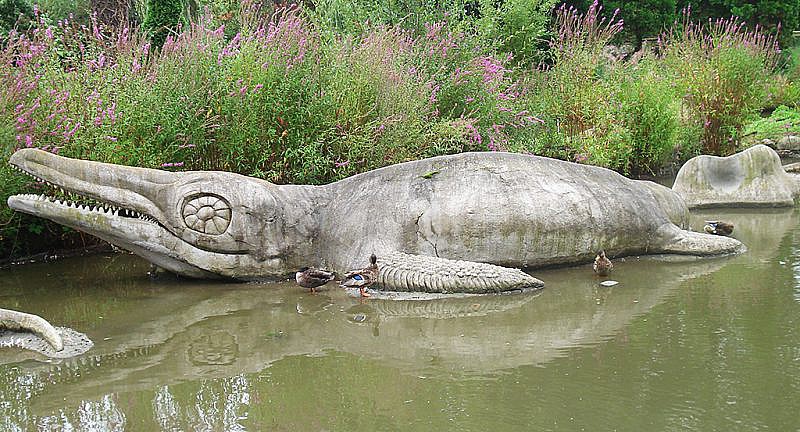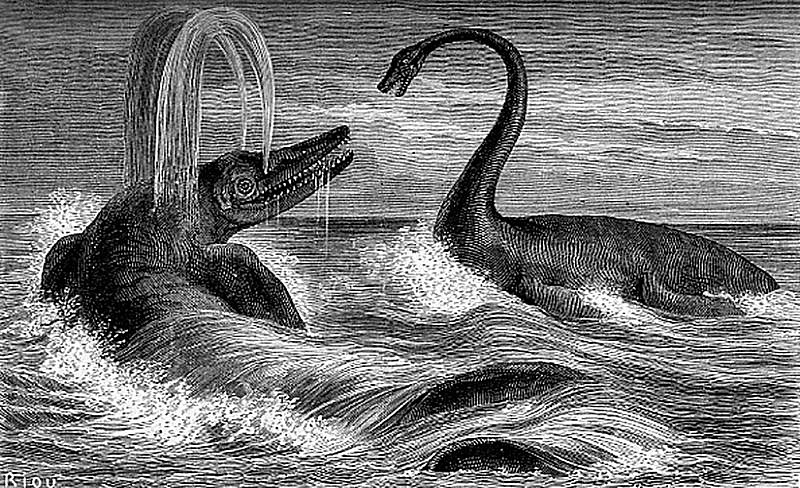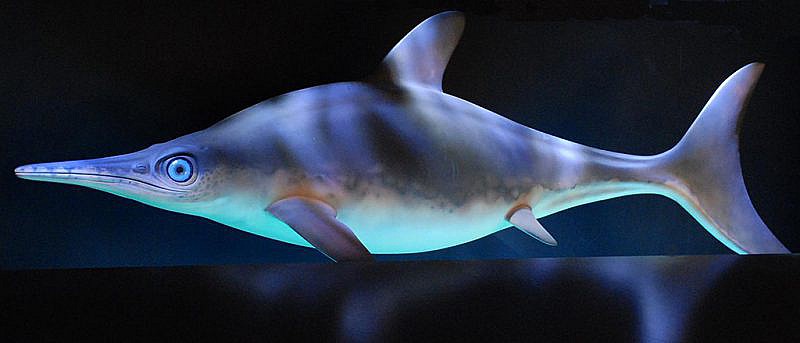Early Ichthyosaur Life Reconstructions
Ichthyosaur fossils were first interpreted as being remains of fish, crocodiles, lizards, dolphins, sea lions or «sea-dragons».
Around 1820 the true nature of the fossils were recognised as belonging to a group of their own, a group of extinct sea-going reptiles as depicted in the detail of the frontispiece published by HAWKINS (1834) above.
Initially, neither the mode of life nor the morphology of the ichthyosaurs were well understood and their reconstructions suffered from a number of errors. In view of their mode of life it was thought, e.g., that they lived near the shore, stayed on the surface of the sea and had a predilection for sunbathing on land. Morphological errors were, e.g., that the early reconstructions of the ichthyosaur genus Ichthyosaurus had no dorsal fin and a straight, propelling tail with a long narrow fin (compare below).

Moreover, in contemporaneous illustrations of the nineteenth century ichthyosaurs are often shown fighting against plesiosaurs. Such combat scenes are embedded in seemingly dark environments with troubled seas to cause stir, perilous pictures of a lost world inhabited by monsters.

It was not until the end of the nineteenth century that some remarkable ichthyosaur specimens were found in southern Germany (Holzmaden area) which show the complete outline of a «fish lizard» skin, preserved as a black marking in the rock. This proves that the typical ichthyosaurs from the Triassic, Jurassic and Cretaceous periods possessed dorsal fins like dolphins and tails which – concerning their orientation – were very much like those of modern pelagic sharks and – regarding their form – resembled dolphin flukes. Therefore, ichthyosaurs are best described as the dolphins of the Mesozoic era. Their bodies were streamlined and in most cases torpedo-like to reduce as much drag as possible, the prime condition for successfully using the potential to swim fast and energy-efficiently over large distances in the open sea (see below).
HAWKINS, T. (1834): Memoirs of ichthyosauri and plesiosauri, extinct monsters of the ancient earth with 28 plates copied from specimens in the author’s collection of fossil organic remains, 51 pp.


